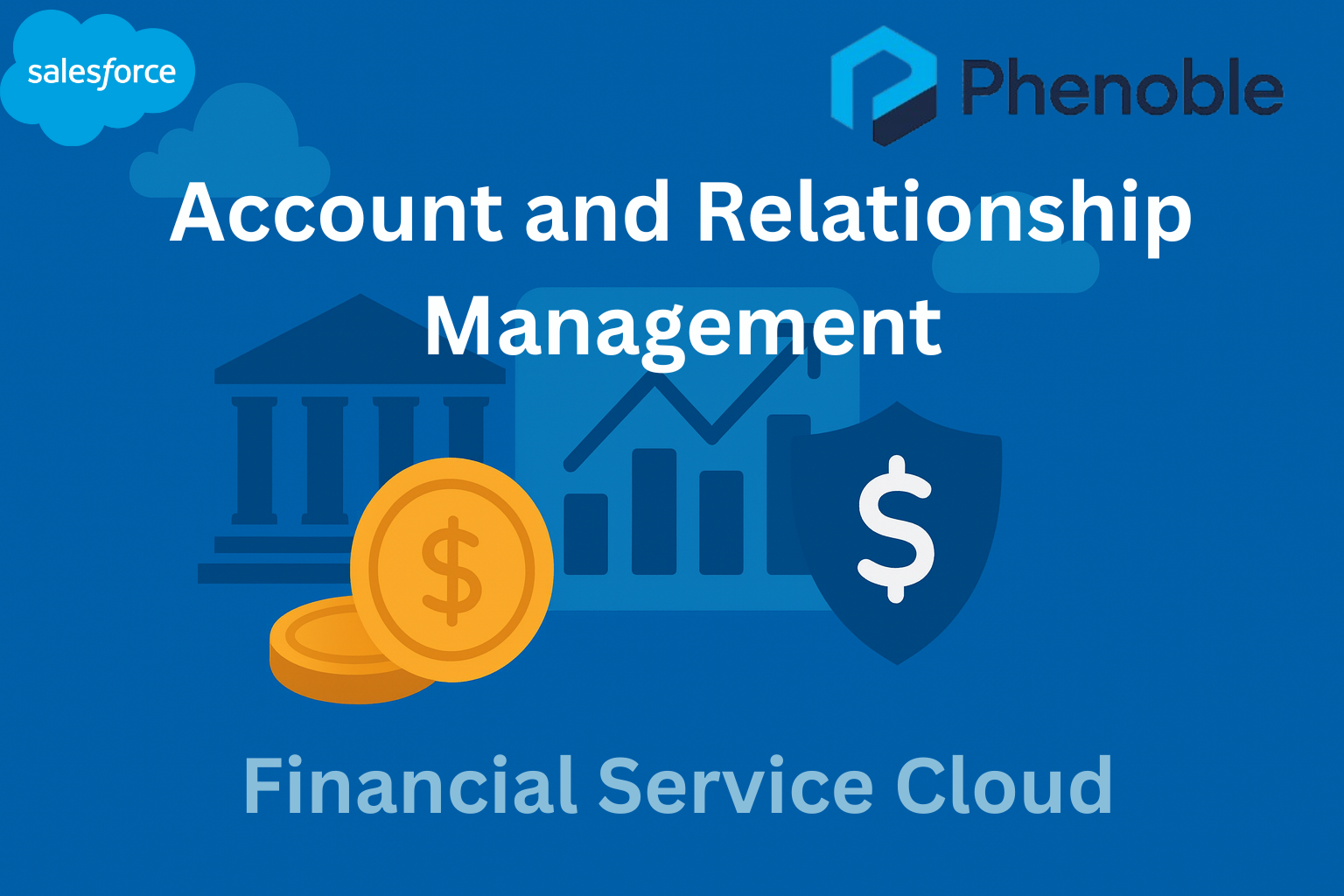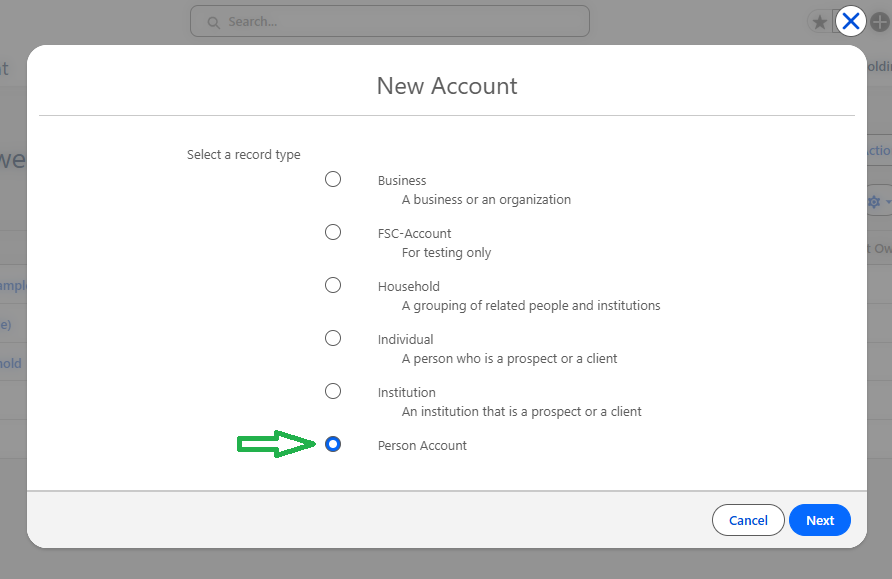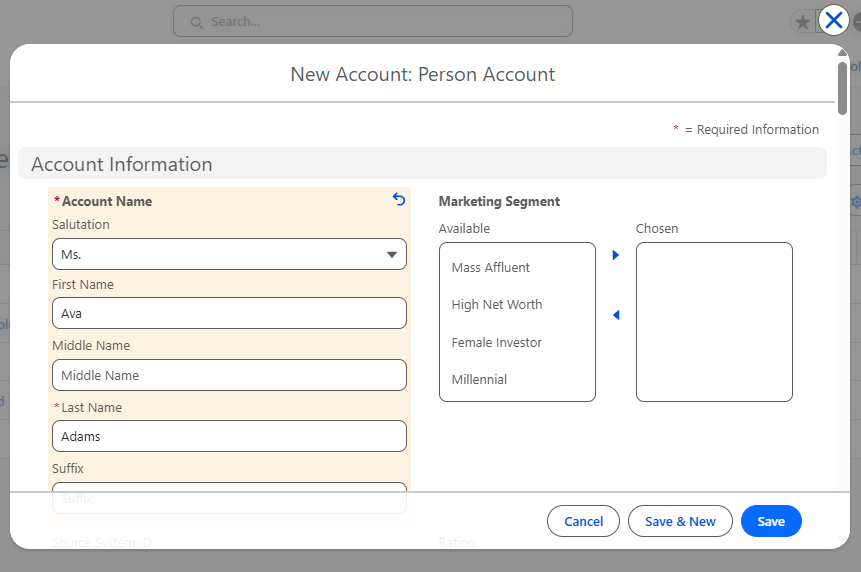
Person Account (Client): Represents the individual consumer or a prospect doing business with the financial institution (prospects, active/inactive customers, spouses/partners, and dependents).
Person Accounts bring together fields from account and contact in a single record to provide a completely streamlined, customizable, and simplified user experience in Financial Services Cloud.
Person Account vs Business Account
- A person account is useful when you’re doing business with a person (B2C) and combines account and contact information into one record.
- A business account stores information in an account object and a contact object. The account object contains information about the business. The contact object contains information about the person you work with at that business.
- Before deciding to move to Person Accounts, always consult your client.
- You can’t disable person accounts after they’ve been enabled for your org.
- Before migrating to person accounts in Financial Services Cloud, create a sandbox to preview how person accounts affect your technical architecture and customizations.
Understanding the Person Account Record Type
Use the Person Account Record Type when a client is a person. For example, if you want to add the family member Rachel’s household, you use the Person Account Record Type.
Considerations for Transforming the Individual Data Model to Person Accounts in Financial Services Cloud:
- After the person accounts model is enabled, you can’t disable it. This restriction is valid across Salesforce and not limited to Financial Services Cloud.
- Review your technical architecture and the customizations that you’ve made to the following to ensure compatibility with person accounts:
- Triggers, flows, and workflow rules
- Components
- Reports
Sharing - If you enable person accounts, your options for Organization-Wide Defaults (OWD) sharing are limited to either Controlled by Parent on Contact or Private on Account and Contact.
Business processes - If your org includes business accounts, contacts, and person accounts, consider whether you need to write separate business processes or workflows.
Integration - Integrations between Salesforce and third-party systems via the API use the Account object to access person accounts. You can query and update the Contact object via the API, but person accounts are created with the Account object.
AppExchange packages - Many applications designed for the Account and Contact objects work with person accounts. Check whether your third-party applications support person accounts.
Our FSC Learning Org comes with Person Accounts already set-up.
- To enable Person Accounts in a new org, please follow these instructions.
- Ensure you are familiar with the considerations for transforming the Individual Data Model to Person Accounts before you enable them.
Test Person Account Settings
Let’s create a Person Account for Rachel’s daughter, Ava Adams as a new Wealth client.
- Navigate to the Wealth Management App via the App Launcher.
- Click on the Accounts Tab and create a new Account by clicking the New button on the upper right.
- Review available record types for a new Account and select the Record Type Person Account.

- Create one Person Account Record called Ava Adams.

- Click on Save.

Summary
Person Accounts in Financial Services Cloud combine Account and Contact fields into a single record to provide a streamlined experience for B2C relationships, representing individual clients or prospects such as customers, spouses, or dependents. Unlike Business Accounts, which store company details and related contacts separately, Person Accounts simplify data management for individual clients. Before enabling Person Accounts, consider that the feature cannot be disabled once activated, and it impacts technical architecture, including triggers, flows, components, reports, and sharing settings, which become limited to Controlled by Parent or Private. Additionally, integration via API relies on the Account object, and compatibility with AppExchange packages should be verified. Careful review of business processes and workflows is essential when using both Person and Business Accounts together.